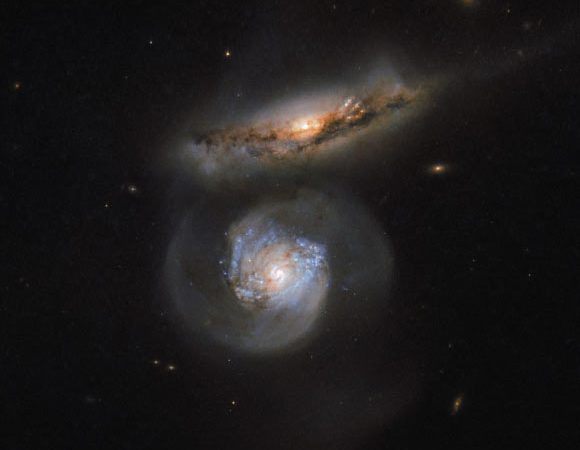The NASA/ESA Hubble Space Telescope has produced a remarkable new image of a pair of interacting galaxies known as NGC 5765.
NGC 5765 was discovered by the British astronomer Sir John Herschel on April 24, 1830.
The pair is located in the constellation Virgo, about 400 million light-years away from Earth.
One member of the pair is the intermediate spiral galaxy NGC 5765A (also known as LEDA 53011 and MCG+01-38-004).
The other member is the spiral galaxy NGC 5765B (also known as LEDA 53012 and MCG+01-38-005).
NGC 5765B is also a special kind of megamaser.
According to astronomers, megamasers are intensely bright, around 100 million times brighter than the masers found in galaxies like our own Milky Way Galaxy. The entire galaxy essentially acts as an astronomical laser that beams out microwave emission rather than visible light.
In NGC 5765B, an active galactic nucleus pumps out huge amounts of energy, which stimulates clouds of surrounding water.
Water’s constituent atoms of hydrogen and oxygen are able to absorb some of this energy and re-emit it at specific wavelengths, one of which falls within the microwave regime. NGC 5765B is thus known as a water megamaser.
Astrophysicists can use such objects to probe the fundamental properties of the Universe.
The microwave emissions from NGC 5765B were used to calculate a refined value for the Hubble constant, a measure of how fast the Universe is expanding.
This constant is named after the astronomer whose observations were responsible for the discovery of the expanding Universe and after whom the Hubble Space Telescope was named, Edwin Hubble.
Source: Sci News

































Leave a Comment
You must be logged in to post a comment.